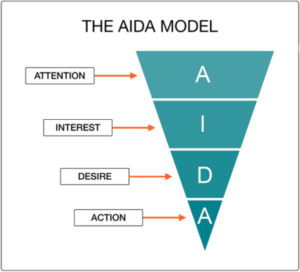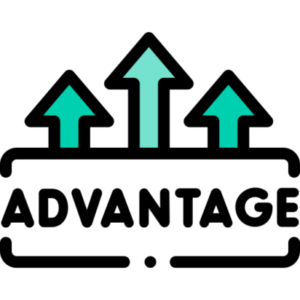If you want to sell more products or services you have to define one key thing: your service or product’s “big promise”.
This big promise is the key result that your product or service gives your customer. It’s the main thing it does for them. It is the result they are after.
The big promise of your product or service is normally contained in your headline or marketing hook.
If you understand your target audience you will have identified what result they are looking for.
But you have to understand how to structure that into a highly effective sales message which can be summarised in one statement.
This is known as your one big promise – it’s the result you are promising them via the use of your product or service.
This post looks at how to craft your big promise statement in 4 steps.
Let’s dive in.
1. Clarify their desired result
The result is the thing your prospects want.
They may want:
- To get in shape, lose weight, and be a size 10
- Build a business that produces passive income
- Eliminate their debts
- An obedient, well-trained dog
In order to be able to craft your big promise you need to pay attention to the language that your audience uses when they describe the results they want.
“I want to lose weight” vs “I want to get in shape”
“I want to start a business” vs “I want to grow my business”
By paying attention to the language your target audience use you will get a better understanding of exactly what they are looking for, and you can use the same language in your statement to mirror their thought processes.
This will help you to create a big promise that is highly targeted and relevant to them, and will enable you to grab their attention much more easily.
2. Identify the barriers
Your customers want a result – this is normally something they want to gain, do, be, or reduce.
They may want more money, to learn how to play an instrument, to be more healthy, or to reduce their debt. Whatever result they are after there is normally a barrier (or barriers) preventing them from obtaining that result. More often than not, this barrier is some sort of action that needs to be taken in order to get that result.
The actual action is not the barrier. The barrier is knowing how or what action to do. They know what they want, but they normally don’t know what they need to do to get it.
For example: If they want to start an online business they may need to know how to build a website. If they want to be more healthy they normally have to do some exercise or follow a diet plan. If they want to reduce their debts they may need to join a debt repayment program.
There is always some sort of action that needs to be taken in order to get the desired result. This action is preventing them from getting the result they want because they aren’t aware of how to perform that action, or what specific action they need to take.
Examples:
- They aren’t aware of how to start a business or build a website
- They don’t know how to exercise effectively
- They don’t know how to manage debt repayments whilst meeting their daily living costs.
Your big promise is your ability to show them how to get what they want. If you can show them how to get what they want you will grab their attention, and ultimately sell more of your products and services.
To identify what your prospect’s barriers are you should ask yourself:
- What result do they want?
- What actions are preventing my prospects from attaining the results they desire?
- How does my product help them to perform those actions or get them done?
- How does my product reduce the “pain” or effort of performing those actions?
Example: Let us say your prospect has a dog that is misbehaving and they want to turn him into a well-trained dog.
The result they want is a well-trained dog that is well-behaved and house-trained. They want a dog that won’t bite anyone, make a mess of the house, or cause them any embarrassment or frustration.
What’s preventing them from having that result? What is the action that is acting as a barrier to obtaining a well-trained dog? The action is the actual dog training – this is the action that needs to happen in order to obtain the desired result. They know they need to train their dog, but they may not know how to train a dog.
When you include this action in your promise you will be bridging the gap between the required action and desired result.
Example: Learn how to train your dog in one week, spending as little as only 1 hour per day.
3. Timing
We know our customers want a particular result. When you promise them that your product can deliver this result the next logical question they will be thinking is “when will I get this result?”
We all want to know when we will get the things we want. Whenever I order something online I always check the expected delivery date because I want to know when I will get it, and I’m sure you’re the same.
It’s natural for us to want to know when we can expect something. Your customers are no different. When you make your big promise you need to establish a timeframe in which they will be able to get the desired result.
You can do this in two ways:
a. Tell them how long it will take them to get the result if they take action themselves
Examples:
- “Train your dog in less than 25 days”
- “Eliminate your debt in 90 days”
- “Lose 7lbs and feel great in 30 days”
b. Tell them how long it will take you to teach them how to get the result
Examples:
- “Learn how to train you dog in only two 25 min sessions”
- “Learn how to eliminate your debts for good in 2 hours”
- “Improve your confidence with the opposite sex in just 1 day”
4. Eliminate the excuses
The fourth part of crafting an effective big promise to is eliminate the excuses.
Your prospects will have reasons why they haven’t yet attained the result they desire. Perhaps they don’t know what the next steps to take are. Maybe they have experienced some stumbling blocks, obstacles, or failures which they haven’t been able to get over.
Whatever their reason (real or imagined) you have to let them off the hook. You should never blame them for not yet achieving the result they desire, even if it is their fault. Think about it, how much would you like someone telling you it your fault you find yourself in your current situation?
Imagine telling your prospects: “You’re in debt because you’re lousy with money and have poor judgment. You’re fat and overweight because you eat like a pig. Your dog is running wild because you’re not a good owner.”
Whilst it may be true that it is their fault for being in their current predicament, your job as a copywriter is to let them off the hook. If you start to blame them they will get defensive and you will most likely lose the sale. No one wants to buy from someone they don’t like, and they will not like you if you blame them, so let them off the hook!
In order to get the sale you have to remove whatever is holding them back. As we mentioned above in part 2 of the formula the barriers normally revolve around not knowing how to do something, having a lack of knowledge, having no experience, etc.
If you can remove these barriers and excuses you will have a much greater chance of securing the sale. You can do this with two simple phrases: “even if” and “without”
Let’s look at some examples:
- “Learn how to start an online business…even if you have no technical skills and have zero business experience”
- “Learn how to write a book….even if you have zero writing experience and failed English at school”
- “How to lose weight without paying for expensive gym memberships or giving up the foods you love”
With the use of these phrases you are removing whatever difficult actions, pain or effort they think they need to undergo to get the desired result. They will be thinking to themselves: “You mean I can lose weight without joining a gym, giving up pizza, or going on a crash diet? Awesome, where do I sign up?!”
When you remove the barriers, excuses, and reasons that are stopping them from taking action to achieve their desired result, you will be making your offer a no-brainer for them.
Putting it all together
We’ve covered all 4 parts of the formula so let’s look at how you can use them all together to craft your big promise which you can use in your headlines, titles, marketing hooks, etc.
Examples:
Starting a business: “Learn how to start a profitable online business in only 2 days, even if you have zero business experience or suck at using a computer.”
Weight loss: “Get a leaner, trimmer body in less than 4 weeks by following our 3-step exercise plan, without having to give up your favorite foods or kill yourself with hard exercise regimes.”
Dog training: “Learn the 4 most effective dog training methods in 3 hours, even if you are a new dog owner or have failed miserably at dog training in the past”
Summary
Your prospects want a particular result, and when you use all four elements of the formula to craft your promise you will be showing them how to get that result when they can expect the result and are removing their excuses or mental blocks.
The four parts of the formula are:
- Clarify their desired result
- Identify the barriers
- Set a timeframe
- Eliminate the excuses
Using all four aspects of the formula will enable you to create irresistible offers that will have your prospects eager to buy.
When you craft the big promise in this way you will be hitting your customers’ buying button, establishing expectations, and eliminating their doubts. In one simple statement, you will have guided them through a psychological process that gets them ready and eager to buy from you.
Use this formula when you are crafting your big promise, and use it in your headlines, blog post titles, video titles etc. You can use this formula in long sales copy, short copy, or even on a video sales letter.
Remember to test out different variations and tweak each element to see if you can improve performance. You may want to experiment with different timeframes, or different “even if”/ “without” statements to see how your target market responds to each.
When you craft your promise statement in this way you should start to see better results.




